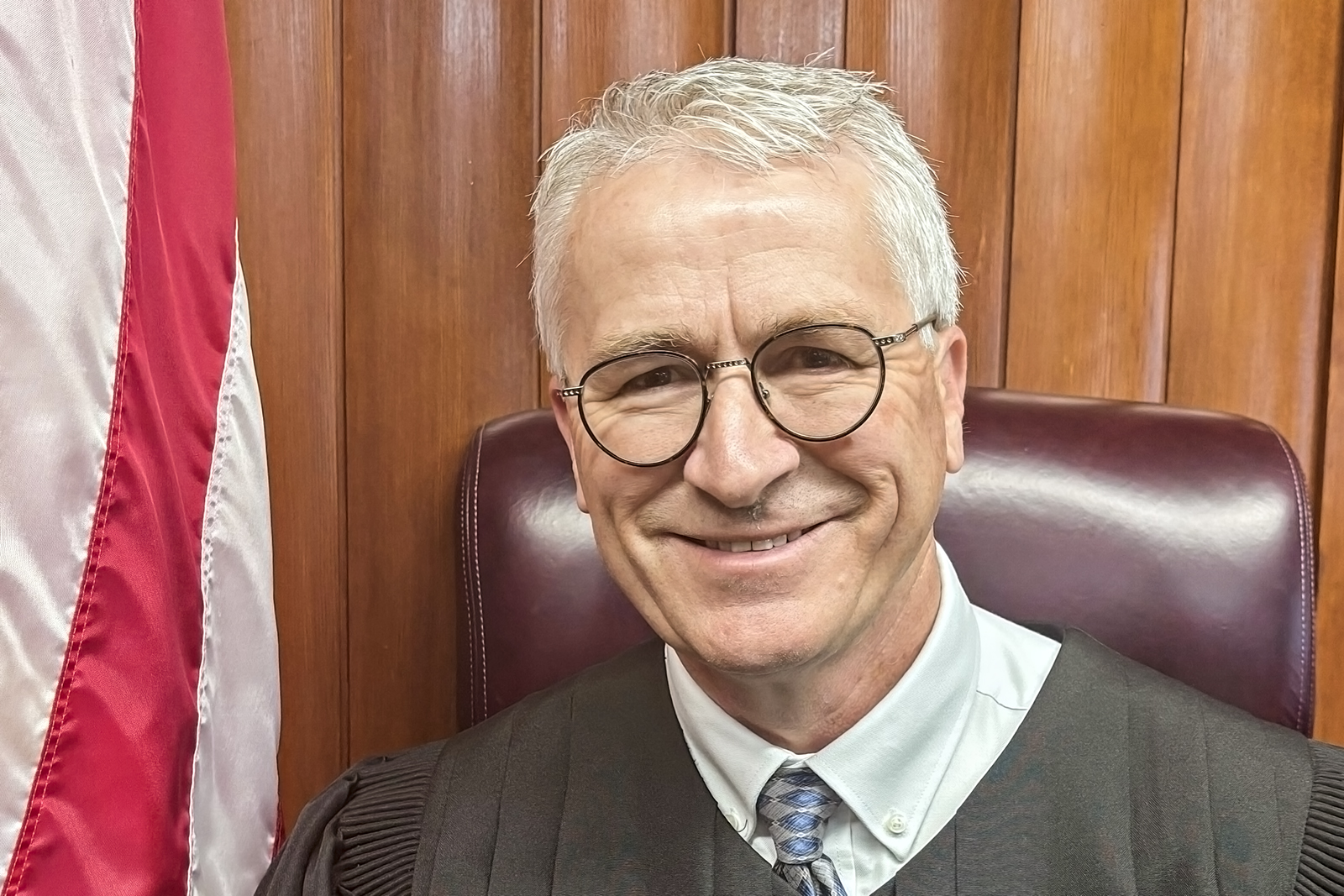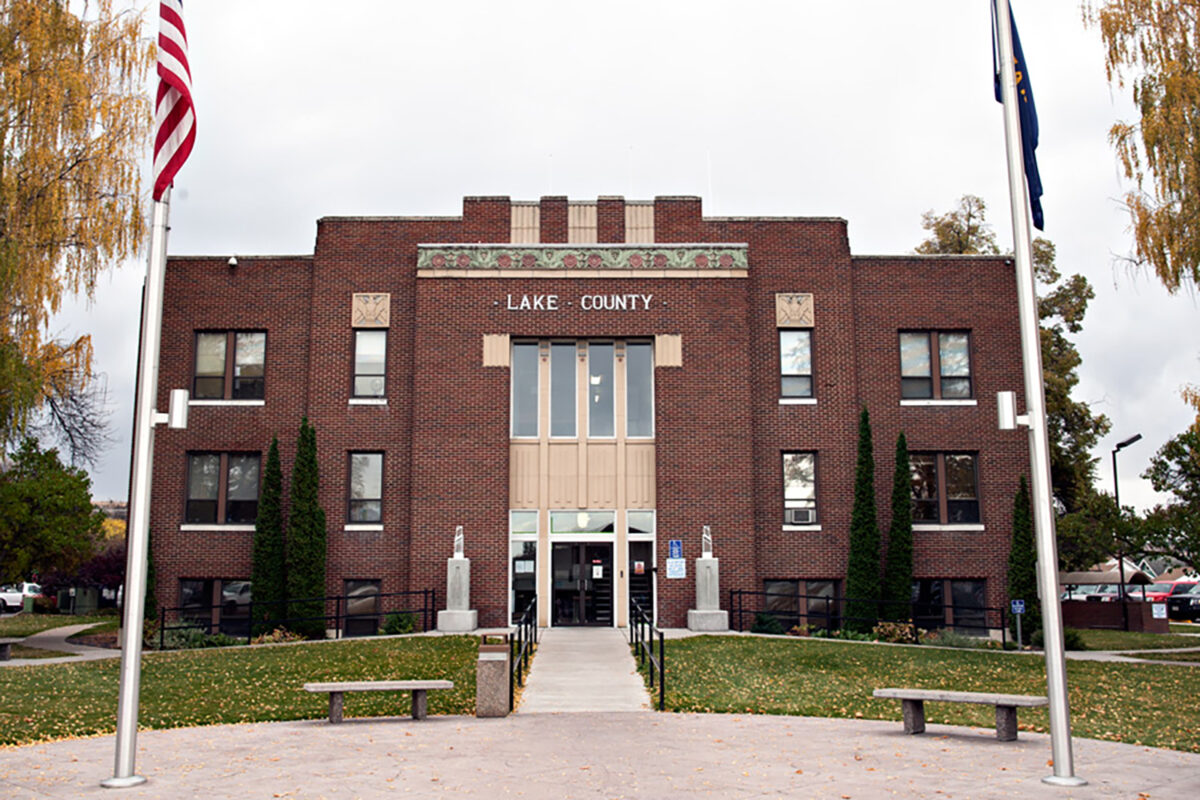‘Unusual’ Judicial Vacancies Test Montana Law Affording Governor Direct Appointment Authority
The decision by Judge-elect Britt Cotter to withdraw from the proceedings amid drug charges sets into motion an appointment process previously administered by a Judicial Nomination Commission. On Monday, longtime Polson attorney and former state lawmaker John Mercer submitted his application to Gov. Greg Gianforte.
By Tristan Scott
In March, when Polson attorney John Mercer stepped up to fill an eight-month vacancy in Montana’s 20th Judicial District covering Lake and Sanders counties, he expected to hand the gavel over and return to his law practice after voters elected a successor to replace retiring Judge Deborah “Kim” Christopher.
Those plans were complicated on Christmas Eve when the newly elected judge, Polson criminal defense attorney Britt Cotter, informed Gov. Greg Gianforte of his decision to withdraw from the judicial affirmation process amid felony drug allegations. Under a 2021 law allowing the governor to directly fill vacant judicial seats, Cotter’s decision not to proceed with the oath of office sets into motion another appointment process that the governor will administer.
“I only expected to complete the remaining eight months of Judge Christopher’s term and then return to my law practice. Now, with the unusual circumstances resulting in a second unexpected vacancy, I consider it my duty to apply for this important position,” Mercer wrote in an application seeking the governor’s appointment.
It’s the latest in a series of unforeseen circumstances that have roiled the 20th Judicial District in the past year while drawing into clearer focus the mechanics of a relatively new measure abolishing the 50-year-old Judicial Nomination Commission and assigning the governor unilateral power to appoint district court judges and supreme court justices.
Facing numerous allegations of unethical performance including a judicial misconduct complaint, Judge Christopher resigned April 5 after nearly 24 years on the bench, opening a vacancy that the November election should have filled with a new six-year term. Following Cotter’s decision to withdraw, however, the term of the new appointment runs through 2026. The remaining four years on the term are subject to election in the 2026 general election on Nov. 3. Either the appointed judge or any other qualified lawyer can file to run in 2026.
The process is established in 3-1-901-7, MCA.
On Monday morning, Gianforte started accepting applications and nominations to fill the district court vacancy by appointment. That afternoon, Mercer officially submitted his application to fill the judicial vacancy for a second time, as well as his intent to stand for election to the post in November 2026, signaling a dramatic shift in his career plans.
“On a personal level, I have found the judgeship to be challenging, educational, and fulfilling. I am willing to give up the private practice of law for service on the Court,” Mercer stated in his application. “It would be my honor to receive this appointment and stand for election for the remainder of the term in November 2026.”
However, because it can take about 90 days for the governor to fill a position, and with Mercer’s temporary term ending Jan. 5, the seat will remain open for at least several months, during which time Mercer said existing backlogs could grow more unwieldy, even as the Montana Supreme Court retains the power to recruit temporary replacement judges.
According to outgoing Chief Justice Mike McGrath, the new incoming chief is also willing to appoint retired judges.
In soliciting applications for the judgeship, Gianforte’s office explained that “any lawyer in good standing who has the qualifications set forth by law for holding the position of district court judge may apply or be nominated.”
The application form is available electronically at nominatejudges.mt.gov.
Applications must be submitted electronically as well as in hard copy by Monday, Jan. 13 at 5 p.m. Applications will be made available to the public.

Members of the public have the opportunity to provide letters of support or other comments regarding the applicants at nominatejudges.mt.gov between Tuesday, Jan. 14 and Wednesday, Feb. 12. Applicants must receive at least three letters of support to be considered for appointment by the governor.
Dave McAlpin, a court administrator in Helena, said the next appointed judge must also proceed through a senate confirmation process during the 2025 session of the Montana Legislature, “depending on whether she or he is appointed before the end of the session.”
“The timing on this one will be ‘nip and tuck,’ as they say,” McAlpin said in an email.
It’s unclear whether the incoming judge could under the new law take office after appointment pending confirmation.
Although not entirely untested, the new judicial vacancy process created by the 2021 legislative session’s Senate Bill 140 remains controversial in that it eliminated the seven-member, independent Judicial Nomination Commission, which was created by the 1973 Legislature to vet applicants for judicial vacancies. Following its enactment in March 2021, the new law was immediately challenged in the Montana Supreme Court, with two of the original lawmakers who voted to create the Judicial Nomination Commission — Bob Brown and Dorothy Bradley — asking the justices to declare the measure unconstitutional.
Several months later, the high court upheld the new law’s constitutionality in a 6-1 ruling.
For Mercer, the key determiner of whether to seek appointment to the new vacancy lay in his family’s blessing.
“With deep community roots, a lifetime of public service, and the encouragement of family and fellow citizens, I am putting my name forward to serve as District Court Judge for the 20th Judicial District, Dept. 2,” Mercer stated in his application. “I offer my demonstrated ability and unwavering commitment to the stability and efficiency of the court. I will strive to promote confidence and respect for the judicial system that the residents of Lake and Sanders County expect and deserve.”

That confidence has eroded in the past week since prosecutors filed charges alleging Cotter, the new judge-elect, bought or tried to buy cocaine from an individual on multiple occasions over a roughly 14-month period beginning in March 2022.
Cotter is charged in Lake County with one felony count of solicitation to commit criminal distribution of dangerous drugs and two additional felonies for attempted criminal possession of dangerous drugs. He faces a maximum sentence of 35 years in the Montana State Prison and a fine of $60,000.
The case was brought against Cotter, who has no criminal history, by the Division of Criminal Investigation (DCI) and the Montana Attorney General’s Office. Assistant Attorney General Meghann Paddock is prosecuting the case and was approved as special deputy county attorney by the Lake County Commissioners. The case was assigned to District Judge Jennifer Lint of the 21st Judicial District in Ravalli County.
An arraignment hearing in the matter is Jan. 8 at 11 a.m. at the Lake County Courthouse.
In a Dec. 22 resignation letter to Chief Justice Mike McGrath of the Montana Supreme Court, Cotter notified the jurist of his decision not to proceed with taking the oath of office.
“This decision, while heartbreaking, is one I believe to be in the best interest of my family, our community, and the broader legal community,” according to the letter, a copy of which was provided to the Beacon with Cotter’s permission.
“Defending myself against these charges will require my full time, effort, and resources as I work to protect my family and myself from the harm these allegations have already caused and will continue to cause,” the letter states.
Cotter has enlisted private attorney Colin Stephens as defense counsel, according to a source familiar with the case.
In the event Cotter had elected not to withdraw from the affirmation proceedings, it’s likely he would have been placed on paid administrative leave until the criminal charges were resolved, according to the source.